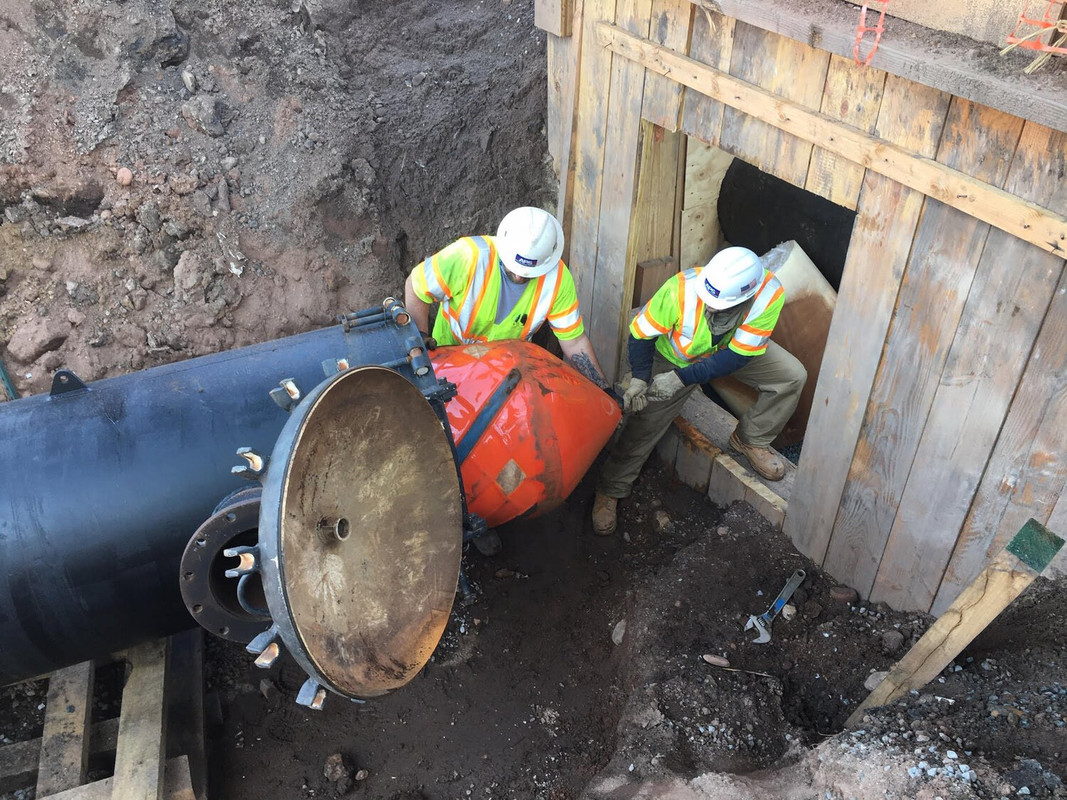How to Clean and Prevent Tuberculation in Cast Iron Pipes
Cast iron pipes are trusted for their strength and long lifespan, which is why they remain a standard in many condos, apartments, and office buildings. But even durable systems develop issues over time. One of the most common problems in older cast iron pipelines is tuberculation—a buildup of rust and bacteria that narrows the inside of pipes, disrupts flow, and threatens water quality.
If you’ve noticed signs of tuberculation, you might assume full pipe replacement is your only option. Fortunately, replacement isn’t always necessary. With the right inspection, cleaning, and prevention methods, you can restore your system and protect it for decades.
Keep reading to learn what causes tuberculation, the warning signs to watch for, and how American Pipeline Solutions (APS) cleans and prevents it with proven, long-term solutions.
What is Tuberculation?
Tuberculation is a corrosive buildup inside cast iron and ductile iron pipes. It occurs when bacteria in water interact with the iron in the pipe wall, leading to iron oxide (rust) deposits that gradually thicken and form rough, tubercle-like formations.
Over time, this buildup reduces the internal diameter of the pipe, restricting flow and increasing pressure. In some cases, tuberculation can also contribute to leaks or pipe failure.
How to Clean & Prevent Tuberculation in Cast Iron Pipes
What Causes a Tuberculated Pipe?
Several factors can lead to tuberculation in cast iron pipes:
Water chemistry: Low pH, high oxygen, or chlorine content can accelerate corrosion.
Bacteria: Microorganisms react with iron to create rust deposits.
Age: Cast iron pipelines installed in the 1950s–70s are now reaching the age where tuberculation is common.
Low water velocity: Slow-moving water makes it easier for deposits to settle and grow.
Lack of protective lining: Older pipes were rarely coated internally, leaving them vulnerable.
Pipeline Experts: Inspection, Cleaning, Coating & More
Certified solutions for inspection, pre-commissioning, cleaning, internal coating, ice pigging™, mapping, and turnkey pipeline projects—maximizing safety and reliability at every stage.
The Signs of Pipe Tuberculation
Tuberculation isn’t always obvious at first. Some of the most common warning signs include:
Discolored or rusty water: Reddish-brown staining in sinks, tubs, or toilets.
Low water pressure: Reduced flow at fixtures due to narrowed pipes.
Unexplained leaks: Corrosion can weaken pipe walls, leading to frequent repairs.
Poor fire system performance: Fire suppression lines may fail flow tests because of restricted gallons per minute.
Bad taste or odor: Metallic or musty water can result from corrosion byproducts.
Cleaning and Prevention Solutions for a Tuberculated Pipe
Pipe replacement is a guaranteed solution—but it’s expensive, disruptive, and unnecessary in many cases. APS offers cost-effective cleaning and prevention options to restore and protect existing pipelines.
Step 1: Mechanical Cleaning
APS uses advanced cleaning methods to remove tuberculation buildup:
Picote Mechanical Equipment – Applies powerful, controlled force to remove heavy deposits while using less water than other methods.
Rotary Head Technology – Effective for loosening and clearing debris in certain conditions.
Pigging – Foam pigs push through pipelines to clear deposits, though it’s often less effective on severe buildup.
Ice Pigging™ – An innovative solution using ice slurry that is highly effective and eco-friendly.
Step 2: Epoxy Coating for Long-Term Prevention
Once pipes are cleaned, APS applies a thin epoxy coating to the interior walls. This protective lining:
Prevents further tuberculation for up to 50 years.
Is NSF-61 certified safe for drinking water.
Reduces maintenance costs and downtime.
Is trusted by industries worldwide—including experts at NASA.
With proper coating, property owners avoid recurring cleanings every 5 years and extend the life of their infrastructure significantly.
Pipeline Experts: Inspection, Cleaning, Coating & More
Certified solutions for inspection, pre-commissioning, cleaning, internal coating, ice pigging™, mapping, and turnkey pipeline projects—maximizing safety and reliability at every stage.
The Risks of Ignoring Tuberculation
Delaying action on tuberculation can have costly and even dangerous consequences:
Health risks – Rust particles and bacteria can compromise water safety.
Fire protection risks – Restricted fire suppression systems may fail inspections.
Financial risks – Emergency repairs or full replacement are far more expensive than preventative maintenance.
Operational risks – Low water pressure and frequent leaks lead to tenant complaints and higher maintenance budgets.
How American Pipeline Solutions Handles Tuberculation Projects
APS provides end-to-end pipeline services that maximize reliability and safety:
Inspection & Assessment – Video inspection and flow testing to diagnose the extent of tuberculation.
Cleaning – Selecting the right method (Picote, rotary, pigging, ice pigging™).
Epoxy Coating – Applying a certified lining for long-term protection.
Testing & Quality Control – Ensuring your system is fully restored and compliant.
With APS, property managers get a turnkey solution that saves money and prevents future issues.
Are you looking for an efficient solution to your tuberculated pipe?
Contact American Pipeline Solutions and learn about our unique pipeline tuberculation solutions.



















